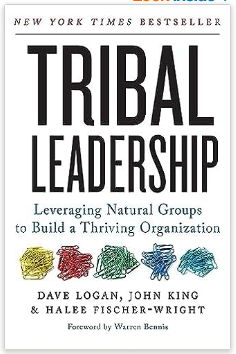Community is a lot harder to foster than productivity. It’s also a lot more important, in the long run.
Community is hard to build and easy to destroy. It requires patience, emotional intelligence, a willingness to
trust, a willingness to be vulnerable, and a sense of humor.
In the context of business we often borrow a sports metaphor and call the people
we work with our “team”. Most of us are so used to it we don’t even
notice its connection to sports anymore.
Metaphors have power, although you may need to exercise a bit of restraint.
Imagine your next stand-up meeting: “Alright folks, it’s the bottom of the ninth, bases are loaded, and we’re down by two story points.
Jenkins, you’re up to bat!”
Ahem. Enough of that. (Although I did suddenly have a mental image of a new software role: umpire.)
Community and Belonging
Paloma Medina has a great summary of six core needs of human beings in her BICEPS model
(which stands for Belonging, Improvement, Choice, Equality, Predictability, and Significance). It’s related to what Daniel
Pink calls the three core needs in his book Drive: autonomy, mastery, and purpose.
Belonging is a powerful need and motivation – it’s a feeling, of friendship, closeness, and trust within a community.
People do their best work when they feel like they belong – like a member of a team. That’s also a big factor in
enjoying their job, which is what keeps them from burning out or quitting.
Community and Management
The relationship between the manager and each team member is unique, and changes over time. As Simon Sinek
says, “Most things break in the middle.
You would never ask someone to do accounting (or any other job) without showing them how to do it, but
that’s what we do with management”.
Part of what many managers don’t know how to do is, ironically, how is to find out whether
each team member knows how to do their job. So they micromanage. They’ve seen other managers do that,
so they figure that’s how it’s done.
But telling people “how” to do things without them asking is
to make it your job, not theirs. It’s a great way to destroy trust and motivation, and once a manager starts
micromanaging, it’s hard for them to know when to stop.

A good way to find out if someone knows how to do their job is to actually, you know, talk to them.
Not by asking “do you know how to fix this bug?” (or whatever) - you don’t
start any conversation by asking yes/no questions.
This is a good opportunity to ask what are called “powerful questions”.
Try asking open ended questions like “how should we fix this bug?” or “what
kind of alternatives are you considering?” or “how do you think we should approach this?” That leads to
other best practices, like questioning your assumptions, testing, considering alternatives, and so on.
The goal is to get them to teach you, either before or during or after they do the work.
That’s a minor example, and not (in my experience) one you will need with people more than once for any
significantly new thing they’re doing. Half the time, you’ll find out that they already know more than you
do, and you’ll learn two things: yes, they know how to do something, and now you will too.
The relationship between each member of the team is just as important (or more important) than
it is with the manager, and it’s even harder to understand and to build.
Teams have a culture and a history, and they don’t change overnight.
When I was interviewing for jobs a few years ago, I talked with
Ed Bryner, the head of engineering at Gecko Robotics, who told me about
a book called Tribal Leadership
by Dave Logan, John King, and Halee Fischer-Wright. It’s a great book, and I recommend it to anyone who
is considering working anywhere with more than one person.

One of the things that book makes clear is that teams have a culture: you can’t expect an individual to
succeed if the team is hurting more than helping. (The book is about far more than that, and it
attempts to classify teams into five different levels of maturity, but for now all we need to know is
that teams have a culture, that culture changes only gradually, and that culture greatly influences the success
of any individual on the team.)
Communitiy, Culture, and Meetings
Most of the regular meetings that are part of Agile culture are designed to help the team establish
a team culture. The daily standup isn’t (supposed to be) just daily status, it’s a chance for the team
to touch base and make sure they’re all working together. The retrospective is a chance to look back and
see what worked and what didn’t, and to make adjustments. The planning meeting is a chance to make sure
everyone understands the problem and the solution, and to make sure everyone is on the same page. Those
all sound like they’re about the job, but they’re about the team every bit as much.
Actually working together is harder in a fully remote team, so that’s why it’s even more important to be deliberate about working together.
Meetings can be a waste of time if they’re not done right, but they’re an essential part of community building –
so you need to learn how to do meetings right. (Or at least better. But that’s a topic for another time.)
Community and Communication Are Part of the Job
An employer should require and reward community building and communication skills. Performance reviews
should include a section on how well the employee is working with others. That’s not just a nice-to-have,
it’s a core part of the job. If you’re not working well with others, you’re not doing your job.
Team Scalability
There’s a lot of talk about a 10X developer, but a person’s real value to an organization is based on
the overall effect they produce in the context of the team. A 10X developer who is a jerk can be a net
negative. A 1X developer who makes the team cohesive and collaborative can have a much more positive effect.
I’d much rather work with a 5x team than a 10x developer. Even a pleasant 10x developer is a single point of failure,
who can be lured away by another employer or fall ill or be abducted by one of those aliens we’ve been
hearing about lately. A 5x team can get a lot more done, and they can do it more reliably. Also, they can all
have actual lives, take vacation, and not get burned out.
Let’s Sum Up
- community, and belonging, is a basic human need, and is core to motivation and happiness
- community is hard to build and easy to destroy
- community is a core part of the job, and is everyone’s responsibility
- community is a core part of the manager’s job
- remote teams can build community, but it takes more effort and more deliberate planning
Community is required for productivity, at least in the long run.
Never mind what John Maynard Keynes said about the long run…






Use the share icon here if you liked it.
Thanks!